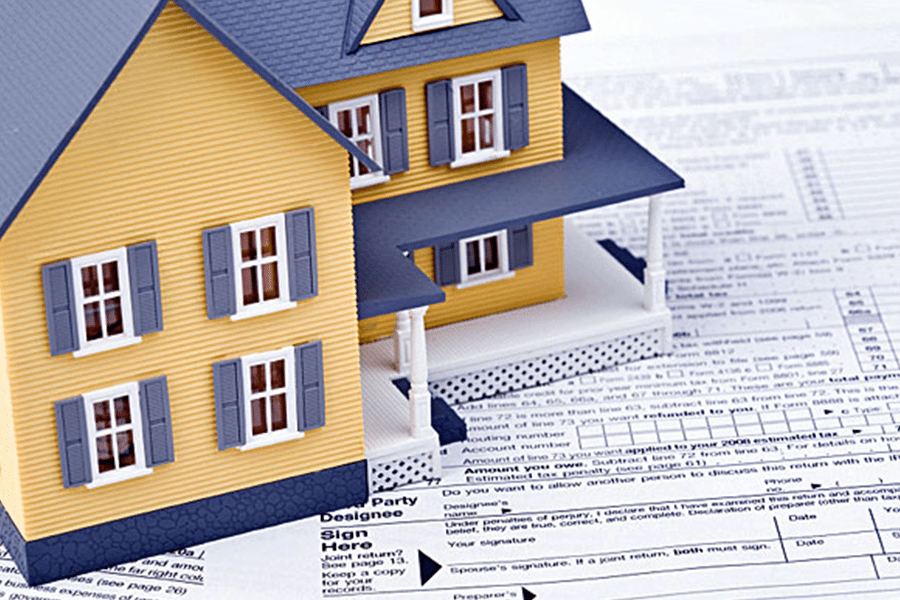The tax treatment of vacation rental property depends on how many days you rent it out and how much you use it yourself. If you rent your vacation property for less than 14 days a year, then you don’t have to report the rental income—plus you don’t deduct the expense of renting. However, if you rent it for more than 14 days, then you’ll need to report the rental income and deductions. If, in addition to renting, you stay there personally for more than 10% of the rental days or more than 14 days, then you will be unable to deduct any losses from the rental.
Key Takeaways:
- Rental properties can be classified as primarily personal, primarily rental, or mixed-use homes.
- Homes are primarily personal if rented for less than 15 days during the year. Rental income and expenses are not taxable or reported on the tax return.
- Homes are primarily rental if the personal use portion is less than the greater of 14 days or 10% of rental days. A portion of expenses are allocated to your personal use, but the vacation home loss limitation doesn’t apply. However, passive loss and at-risk rules might still apply.
- Homes are mixed-use if they are rented for more than 14 days and used personally for more than 14 days or 10% of rental days. Losses from mixed-use homes are disallowed under the vacation home rules.
Tax Rules for Homes With Minimal Rental Activity
If you rent out your personal dwelling for less than 15 days during the tax year, the rental use will be ignored. Under this rule, your property will be considered a personal residence and not mixed-use property.
Treatment of Income & Expenses
If you engage in minimal rental activity during the tax year, you don’t need to claim any income or expenses on Schedule E. Furthermore, 100% of property taxes and mortgage interest can be deducted as personal on Schedule A without any allocation of the expenses to the rental use.
Naomi owns a rental property. During the year, she rented out the home for 12 days but made it available for rent for 30 days. For those 12 days, Naomi earned $1,200 and also incurred $300 in rental-related expenses.
Although the property generated revenue and she incurred expenses, since she rented out the property for less than 15 days during the tax year, she will not report any of the income or expenses on her tax return. However, Naomi had the following expenses during the tax year.
- Property taxes: $5,000
- Mortgage interest: $12,000
- Advertising fee: $500
- Cleaning service fee: $1,000
Since Naomi’s activity falls under the minimal use rule, she can deduct all her property taxes and mortgage interest on Schedule A just like any other homeowner. The advertising and cleaning service fees are non-deductible.
Tax Rules for Homes With Minimal Personal Use
If you personally used the rental property for less than 14 days, or 10% of the total days it was rented to others at a fair rental price, then your property will be considered a rental property, not mixed-use property, by the IRS. Since it’s not mixed-use property, losses are not disallowed under the vacation home rules.
Treatment of Income & Expenses
If, by this definition, your property is a rental property, you must include your rental income and expenses on Schedule E. Property taxes, mortgage interest, operating expenses, and depreciation are all deductible on Schedule E, but only after reducing them for the personal-use portion of the property. Since it is not a mixed-use property, the vacation home rules do not limit your ability to deduct a loss if your rental expenses exceed your rental income.
Even if your deductible loss is not limited by vacation home rules, your loss could still be limited by the passive loss and at-risk loss rules.
Diego owns a residential rental property. During the year, the property was used in the following ways:
- Diego rented out the property for 350 days, earned $10,000, and had $15,000 in expenses
- His brother stayed in the property for 10 days and was not charged rent
- The property was unoccupied for 5 days
Although Diego’s brother’s occupancy counts towards Diego’s personal use days, he used the property for less than 14 days during the tax year. As such, the IRS will treat it as a rental property and not a mixed-use property.
Diego’s income and expenses are as follows:
- Rental percentage: 350 days ÷ 360 days = 97.2 %
- Rental expenses: $15,000 x 97.2 % = $14,580
- Rental loss/gain: $10,000 – $14,580 = $4,580
Given that fact pattern, Diego will include the $4,580 loss on Schedule E if allowed under the passive loss rules.
Tax Rules for Mixed-use Vacation Homes
You may use your property for both business and personal purposes—this is called a mixed-use property. Your property is mixed-use if your:
- Personal days are more than the greater of 14 days or 10% of rental days, and
- Rental days are more than 14 days
If your property falls into this category, you will not be allowed to deduct any loss if your rental expenses exceed your rental income.
Treatment of Income & Expenses
Step 1: Determine Your Rental Percentage
When you have a mixed-use property, you must divide your expenses between rental and personal use based on the number of days that apply to each.
When dividing your expenses, be sure to follow these rules:
Personal Use Day | Rental Day |
|---|---|
You occupy the property for any part of the day. | Any day that the home is rented out at the fair rental price—even if it is also used for personal reasons on that day. |
The property is used by a member of your family—unless they use it as their main home, and they pay the fair rental price. | Any day that a property is held out for rent, but not actually rented. |
The property is occupied by someone who is renting it for less than a fair rental price. |
The number of rental days divided by the number of personal plus rental use days yields your rental percentage.
Rental Percentage = Rental Days ÷ (Personal + Rental Days)
Step 2: Group Expenses Into Four Tiers
- Tier 1: Direct rental expenses, such as advertising and leasing agent fees
- Tier 2: Mortgage interest and property taxes
- Tier 3: All other rental expenses except depreciation
- Tier 4: Depreciation
Step 3: Reduce Rental Income by Tier 1 Expenses
Tier 1 expenses are directly related to the rental and would not have been incurred if the house had not been available for rent. Therefore, tier 1 expenses are 100% deductible against rental income on Schedule E.
Step 4: Reduce Rental Income by Tier 2 Expenses
Tier 2 expenses are mortgage interest and real estate taxes that would be deducted on Schedule A as itemized deductions if the house had not been rented out. These expenses must be allocated between rental and personal use based on the rental percentage. The personal-use portion of tier 2 expenses can be deducted on Schedule A.
The rental-use portion of tier 2 expenses can reduce the rental income after tier 1 expenses down to zero, but tier 2 expenses cannot create a loss. Any excess tier 2 expenses are deducted on Schedule A and cannot be carried forward to future years.
Step 5: Reduce Rental Income by Tier 3 Expenses
Tier 3 expenses are most of your expenses for maintaining the house, such as utilities and maintenance. These expenses must be allocated between rental and personal- use based on the rental percentage. The personal-use portions are not deductible.
The rental portion of tier 3 expenses can reduce income after tier 2 expenses but cannot create a loss. If all of the rental income is offset by tier 1 and tier 2 expenses, then all the tier 3 expenses will be disallowed. Any unused tier 3 expenses carry over and can offset rental income from this property in future years.
Step 6: Reduce Rental Income by Tier 4 Expenses
Depreciation is usually the only tier 4 expense. Allocate depreciation to the rental property by using the rental percentage. Depreciation allocated to personal use is not allowable and does not reduce your basis in the property.
Rental depreciation can offset rental income after tier 3 expenses but cannot create a loss. Any disallowed depreciation does not carry over, but it also does not reduce the basis in the house.
Last year, Amara rented out a rental property that she also used for personal use.
She rented out the home for 250 days and received $8,000 in rental income. She used the home for 50 days during the year, and her brother Arinze used the home for 65 days during the year. Amara incurred a total of $9,000 in costs associated with operating the home. These rental expenses consisted of $500 in advertising expenses, $2,500 in mortgage interest and property taxes, $5,000 for miscellaneous expenses, and $ 5,000 in depreciation.
Let’s figure out her rental percentage and rental expense:
- Step 1: 250 ÷ (250 + 115) = 68.49% rental percentage
- Step 2: Group Expenses into four tiers:
- Tier 1: $500 in advertising expenses
- Tier 2: $2,500 in mortgage interest and taxes
- Tier 3: $5,000 in miscellaneous expenses
- Tier 4: $5,000 in depreciation.
- Step 3: Offset rental income with 100% of the tier 1 expenses:
$8,000 – $500 = $7,500 - Step 4: Offset the remaining rental income with the rental portion of tier 2 expenses:
$7,500 – ($2,500 x 68.49%) = $5,788
The personal portion of tier 2 expenses can be deducted on Schedule A. - Step 5: Offset the remaining rental income with the rental portion of tier 3 expenses:
$5,788 – ($5,000 x 68.49%) = $2,364
The personal portion of tier 3 expenses is not deductible. - Step 6: Offset the remaining rental income by the rental portion of tier 4 depreciation expense:
$2,364 – ($5,000 x 68.49%) = $1,061 Loss
Since Amara’s property is a mixed-use vacation home, the $1,061 loss is disallowed. It’s disallowed by reducing the tier 4 depreciation expense to $2,364, which is the rental income remaining after tier 3 expenses. The home’s basis is only reduced for the $2,364 of actual depreciation claimed rather than the full amount and there are no disallowed deductions carried forward to next year.
Common Misunderstandings of Vacation Home Rules
As vacation homes are frequently used for varied purposes, the applicable rules for each situation can cause confusion. Here are a few key points of clarification for some common misunderstandings regarding vacation home rules.
Nuances of Personal Use
Since the definition of “personal use” makes the difference between a property being classified as personal use or mixed-use property, it’s important to understand the meaning of the term.
According to case law, personal use does not require the presence of pleasure or enjoyment. An individual who stayed at his vacation home overnight while performing volunteer services was considered to have used the home for personal purposes, even though he was not there for recreation.
Also, for duplex properties and multi-family homes, the Tax Court has determined that an owner-taxpayer’s personal use of one unit does not automatically carry to other units in a multi-unit structure, despite the IRS’ attempts at that argument. More personal use would mean potential classification as mixed-use property, at which point the IRS could disallow vacation home losses.
What Constitutes a Dwelling Unit
When determining losses on vacation property, it’s important to identify what constitutes a dwelling unit for purposes of a vacation property. While a single-family residence might be easily identifiable as a dwelling unit, other structures like a boat or motor home might raise more questions. To assist with this analysis, IRS regulations state that a “dwelling unit” must provide basic accommodations that include a toilet, a place to sleep, and a place to cook.
Renting to a Relative for Less Than Fair Market Value
Letting relatives use your vacation home can complicate both the personal relationship and your tax situation. This dynamic is a common source of confusion for taxpayers.
If you charge your relative the prevailing market rate for the rental, the days will count as rental versus personal days. It may be tempting, however, to cut a relative a break and charge them less than the fair market value (FMV) of the rental. Doing so would cause you to have to treat that relative’s rental as personal use to you.
This situation creates a bit of a tax nightmare. You must pay tax on the discounted rental income, but you can’t deduct any of the expenses allocated to that rental period. To avoid this situation, you should charge relatives fair market value for the use of your vacation property. You can determine fair market value by identifying the amount of rent that is being charged for similar properties in the area.
Frequently Asked Questions (FAQs)
No, you do not have to keep records of the rental income and expenses because you are not reporting any rental income or deducting any rental expenses.
No, any day that you spend repairing and maintaining your property is not counted as a day of personal use.
If you rent out your vacation home for more than 14 days during the year, you need to allocate property tax expenses between the rental and personal use. The personal portion can be deducted on Schedule A but counts toward the $10,000 state and local tax (SALT) limitation. The rental portion of property tax is reported on Schedule E and does not count toward the SALT limitation.
It depends on the amount of rent received. For 2024, a 1099-K should be issued from Airbnb for income received from payment cards or apps if that amount is over $5,000. This is a change from prior year requirements. Note that the IRS has delayed 1099-K changes previously, and we may see continued future delays.
No. Days donated to a charity for the right to use a vacation home do not qualify for a charitable deduction as it is a donation of only a partial interest in the property.
Generally, yes. Rental to a family member is typically considered personal use unless the property is used as the family member’s principal residence and they are paying rent that is fair market value.
Bottom Line
To claim deductions for a vacation rental property, you must follow certain rules depending on the categorization of the property. Keeping track of the number of days the property is used for personal purposes vs rental purposes is essential to claiming deductions properly.


